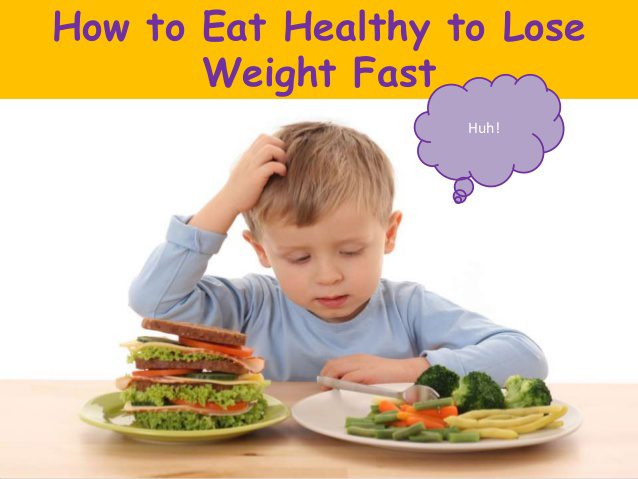
How many calories do you need to consume to lose weight?
Most people need a daily range of somewhere between 7 and 10 calories per pound for long term weight loss success, or a minimum of 1200 calories per day. Keep in mind, that everyone is unique in the way they lose weight, and we all burn different numbers of calories at different rates. So one person may lose weight faster or slower from week to week. You may drop big numbers one week yet stay the same or go up a pound the next. This is perfectly normal. Don’t let that derail you. Consistent effort overtime is what ensures a lifetime of good health.
Weight loss is a process. It is never a straight path to your goal. Weight loss is always faster in the beginning, because that is when you have more to lose, but it slows down as you get closer to your goal. So you may need to tweak your calorie intake as needed.
When to eat?
I recommend eating smaller meals 5-6 times a day, including 3 main meals and 2-3 snacks. This way you won’t be too hungry and won’t go on sugar or carb binges to satisfy your growling stomach. And so you won’t go to bed feeling stuffed and sick from too many bad, empty calories.
Eating more frequent meals and snacks will:
- Keep you from feeling deprived
- Help control blood sugar and insulin levels (insulin in fat burning hormone.
- Lead to lower body fat
- Keep you energized for exercise and activity.
- Reduce stress hormones in the body that can contribute to fat accumulation
- Establish a regular pattern of eating that helps counter impulse eating
Don’t skip your meals! Skipping meals actually contribute to weight gain, not loss.
When to stop eating?
Most overeaters don’t stop eating when they are comfortable – they stop when they are stuffed! The following food scale defines your body’s hunger signals and how to interpret them.
- Famished or Starving: You feel week and/or lightheaded. This is a big no-no.
- Very hungry: You can’t think of anything else but eating. You are cranky and irritable and can’t concentrate.
- Hungry: Your stomach is growling and feels empty.
- A little bit hungry: You are starting to think about your next meal.
- Satisfied: You are comfortable, not really thinking about food. You feel alert and have a good energy level.
- Fully satisfied: You’ve had enough to eat, maybe a little too much. Maybe you took a few extra bites for taste only, not hunger.
- Very full: Now you need to unzip your jeans. You are very uncomfortable, bloated, tired. Maybe you don’t feel great. Where is the couch…? You should never feel like this after meal.
Refer to this scale when you eat:
1-3: Eat! Eat!
5: Stop, especially if you are trying to lose weight.
6: Definitely stop.
7: You may have waited too long. Better go find a couch and start over tomorrow.
Keep food diary: write down everything you eat at least at the beginning when you are trying to establish new healthy eating habits. This will help you discover the most favorable foods- those that leave you satisfied while you exploring new foods. And also will help you recognize and avoid appetite stimulating foods (usually processed foods high in starch, sugar and fat) and trigger foods that lead to excessively large portions.
Try to cook healthy meals at home. And when you go out order grilled, baked, broiled or poached food and avoid sautéed or pan-fried.
Overweight people’s diet usually looks like this:
- Red meat, fast foods and processed foods are consumed at all hours
- Loads of cholesterol, salt, and sugar are added to the mix
- Not enough fresh fruits and vegetables are consumed
- Fiber and antioxidants are at bare minimum
- Drink of choice is soda, soda and more soda
- Chaotic schedules result in many skipped meals and or eating on the run.
Instead you need to:
- Veggie load in every way possible, with salads, sandwiches and sides.
- Raise fruit intake by skipping sugary juices and adding fresh fruit to smoothies
- Eat more whole grains, like brown rice, whole wheat pasta and protein packed quinoa
- Eat lean cuts of meat and poultry and increase fish intake to several times a week.
- Eat open faced sandwiches with one slice of whole grain bread
- Minimize consumption of red meat and high fat dairy foods
45% of your daily calories should be complex carbohydrates – Vegetables, fruits, whole grains. Aim for a minimum of 4 cups of a variety of fruits and non starchy vegetables daily. Favor fresh fruits and nonstarchy vegetables over grain products. Choose grain foods in moderation and select those with high
fiber content.
Vegetables:
- Cook them for the least amount of time possible to preserve nutrients
- Avoid added fat, steam, grill or stir fry with a minimum amount of oil
- Try to eat at least one raw vegetable a day
- Eat vegetable salad most days of the week
- Fresh vegetables are best, but it is ok to choose frozen. If you opt for canned, watch sodium content
Fruits:
- Enjoy at least one raw fruit each day. Try a new fruit every week to add a variety to your diet
- Choose fruits from all color groups. This ensures you are getting a variety of nutrients
- Eat fruit for dessert!
- If you chose canned fruit make sure it is packed in water, without extra sugar.
Whole grains:
- Choose grains with minimal processing
- If you buy bread products avoid the ones that say “enriched”. Choose the ones with at least 2 grams of fiber per serving, but aim for 5 grams
- If you buy cereals, choose the ones with fewer than 5 grams of sugar and at least 5 grams of fiber per serving
- If you eat out ask for whole grain rolls or brown rice instead of white
Protein:
- Limit your servings of red meat to twice a week
- Avoid processed meets
- Add more fish to your diet
- Choose lean white meat in poultry
- Dairy choices include: skim or low fat milk, plain yogurt or sugarless fruit yogurt, cottage cheese, ricotta cheese, egg whites
- Vegetarian protein: beans, legumes, soy beans, tofu, edamame
Good fats
- Olive oil, coconut oil, nuts, avocado. But limit your calories from those to 100-200 a day.
Comment and let me know how good or bad you consider your current diet.
Want to learn more about healthy eating that you can combine with exercise to get amazing results? Check out my Fit in 15 Program.





